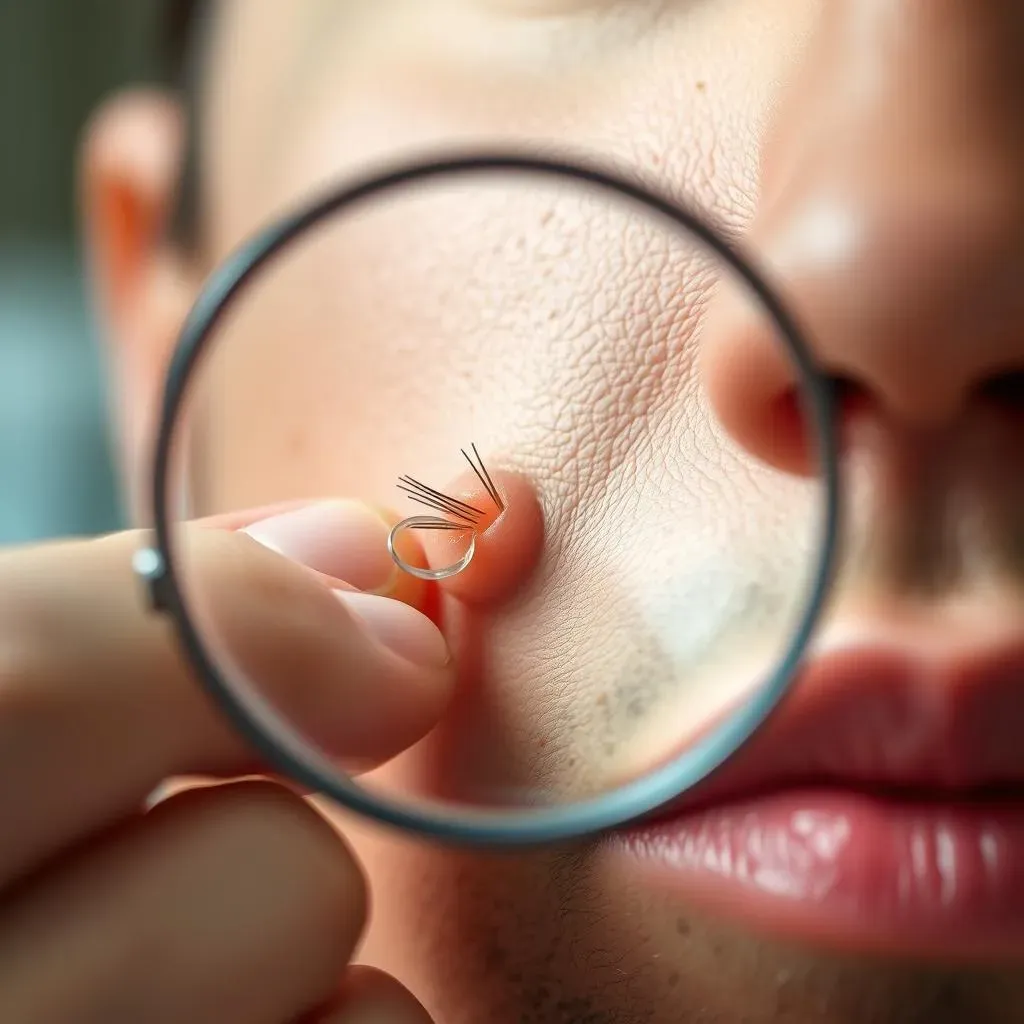Table of Contents
Ingrown hairs can be a frustrating and painful problem, especially when they appear on the face. Removing ingrown hair from the face requires careful consideration to avoid further irritation and potential scarring. If you're struggling with ingrown hairs, you're not alone. Many people experience this issue, particularly after shaving, waxing, or tweezing. In this article, we'll delve into the causes and symptoms of ingrown hair, explore various treatment options, discuss prevention methods, and examine advanced solutions for persistent cases. Whether you're looking for home remedies or professional treatments, our goal is to provide you with a comprehensive guide to removing ingrown hair from your face and achieving smooth, healthy-looking skin. By understanding the root causes and taking proactive steps, you can say goodbye to ingrown hairs and hello to a clearer, more confident you.
Causes and Symptoms of Ingrown Hair on the Face
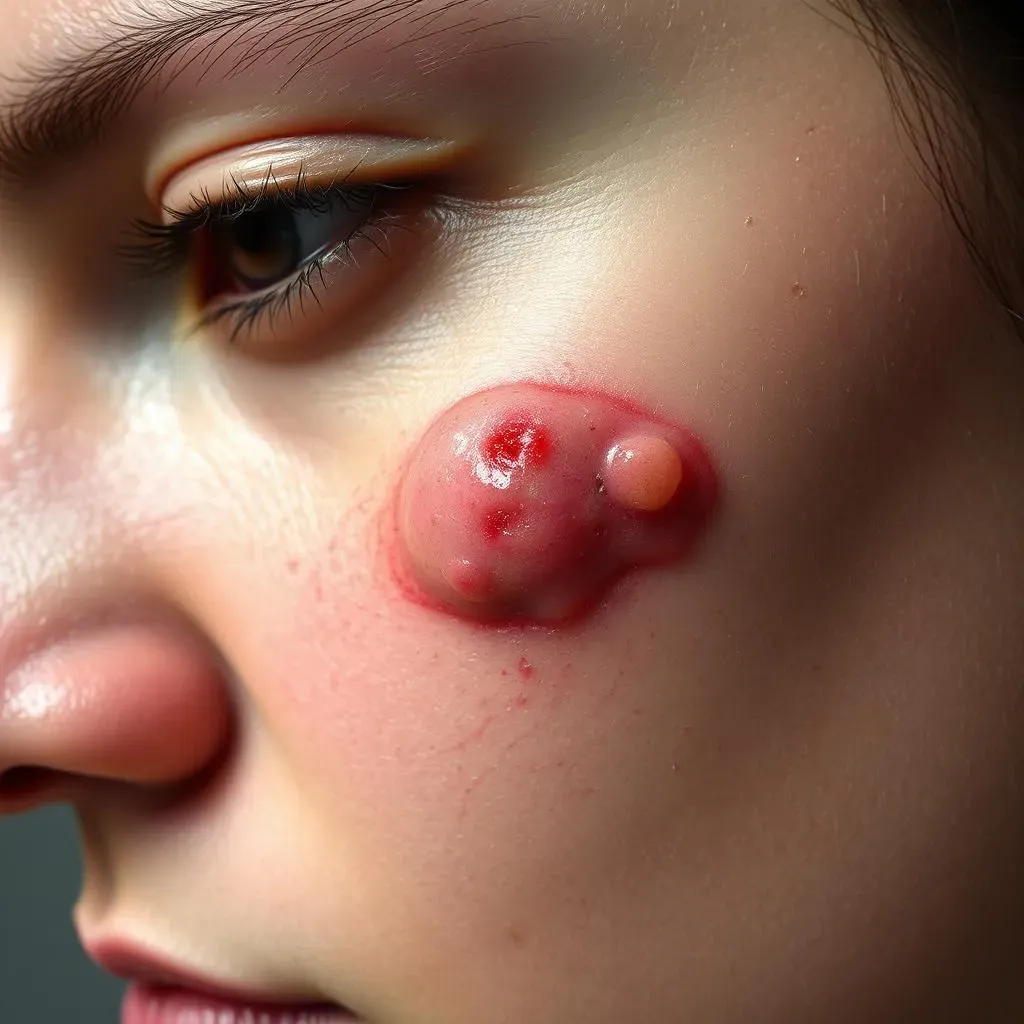
Causes and Symptoms of Ingrown Hair on the Face
Understanding Ingrown Hair: Causes and Risk Factors
Ingrown hairs occur when a hair grows back into the skin instead of outward, often due to improper hair removal techniques. Shaving, waxing, and tweezing can all contribute to ingrown hairs, especially in individuals with curly or coarse hair. Other risk factors include tight clothing, genetics, and poor skin care. For instance, shaving against the grain can cause the hair to bend back into the skin, leading to inflammation and irritation.
It's essential to recognize the symptoms of ingrown hair to address the issue early on. Common signs include redness, swelling, pain, and pus-filled bumps. If left untreated, ingrown hairs can lead to scarring, hyperpigmentation, and even infection. Being aware of these symptoms allows you to take prompt action and explore the best removal methods for your skin type.
Symptom | Description | Severity |
|---|---|---|
Redness and inflammation | Mild to severe redness around the affected area | Common |
Pus-filled bumps | Pustules that can be painful and may discharge pus | Severe |
Hyperpigmentation | Dark spots that remain after the ingrown hair has healed | Variable |
Identifying Ingrown Hair: Diagnosis and Self-Examination
Diagnosing ingrown hair typically involves a visual examination of the affected area. A healthcare professional may also ask questions about your hair removal habits and skin care routine to determine the underlying cause. Self-examination is also crucial in identifying ingrown hairs early. Look for small, discolored bumps or areas of redness, and take note of any pain or itching.
- Use a mirror to inspect the affected area closely
- Gently cleanse the skin to reduce oil and bacteria
- Apply a warm compress to bring the ingrown hair to the surface
- Avoid picking or scratching the area to prevent infection
Removing Ingrown Hair from Face: Treatment Options
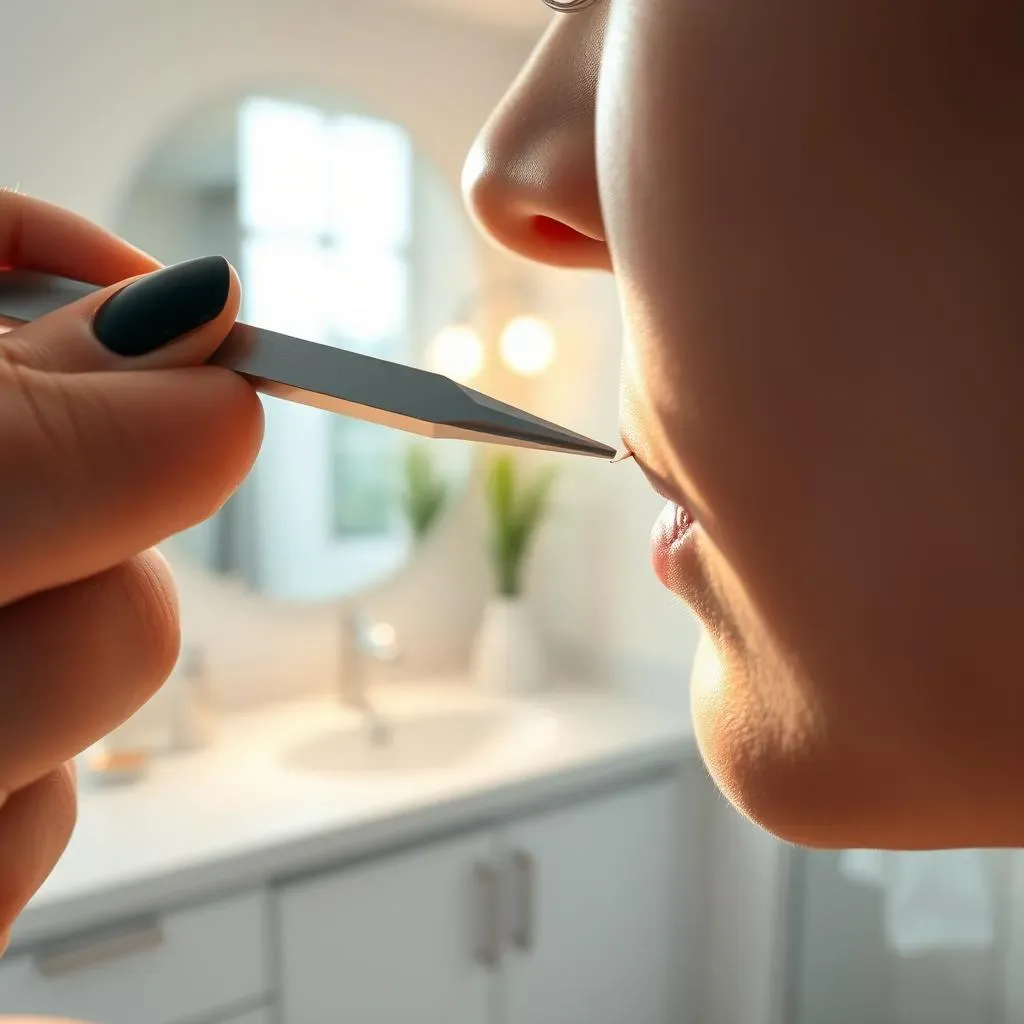
Removing Ingrown Hair from Face: Treatment Options
Home Remedies and Self-Care
Before seeking professional help, there are several home remedies and self-care techniques you can try to remove ingrown hair from your face. One of the most effective methods is applying a warm compress to the affected area. Soak a clean washcloth in warm water, wring it out, and apply it to the ingrown hair for 3-5 minutes. Repeat this process several times to help bring the hair to the surface. You can also use a pair of tweezers to gently tease out the ingrown hair, but be careful not to push too hard and cause further irritation.
Exfoliating the skin can also help prevent ingrown hairs by removing dead skin cells and other debris that may clog pores. Use a gentle exfoliator containing alpha-hydroxy acids (AHAs) or beta-hydroxy acids (BHAs) one to two times a week. Additionally, consider using an ingrown hair serum or cream that contains ingredients like salicylic acid, tea tree oil, or aloe vera, which can help reduce inflammation and promote healing.
Treatment | Benefits | Precautions |
|---|---|---|
Warm compress | Brings ingrown hair to the surface, reduces swelling | Avoid applying too much pressure, which can cause further irritation |
Tweezing | Removes ingrown hair, promotes healing | Be gentle to avoid pushing the hair further into the skin |
Exfoliation | Removes dead skin cells, prevents clogged pores | Avoid over-exfoliating, which can dry out the skin |
Medical Treatments and Professional Removal
If your ingrown hair persists or becomes severely infected, it may be necessary to consult a dermatologist or healthcare professional for further treatment. They may prescribe topical creams or ointments containing antibiotics, hydrocortisone, or retinoids to reduce inflammation and prevent infection. In some cases, they may use a sterile needle to remove the ingrown hair or prescribe oral antibiotics if the infection is severe.
For persistent ingrown hairs, laser hair removal or electrolysis may be recommended as a more permanent solution. These treatments target the hair follicle, reducing the likelihood of regrowth and subsequent ingrown hairs. While these methods can be effective, they may require multiple sessions and can be more costly than other treatments.
- Topical creams: antibiotic, hydrocortisone, retinoids
- Oral antibiotics for severe infections
- Sterile needle removal by a healthcare professional
- Laser hair removal or electrolysis for permanent reduction
Prevention Methods for Ingrown Hair on the Face
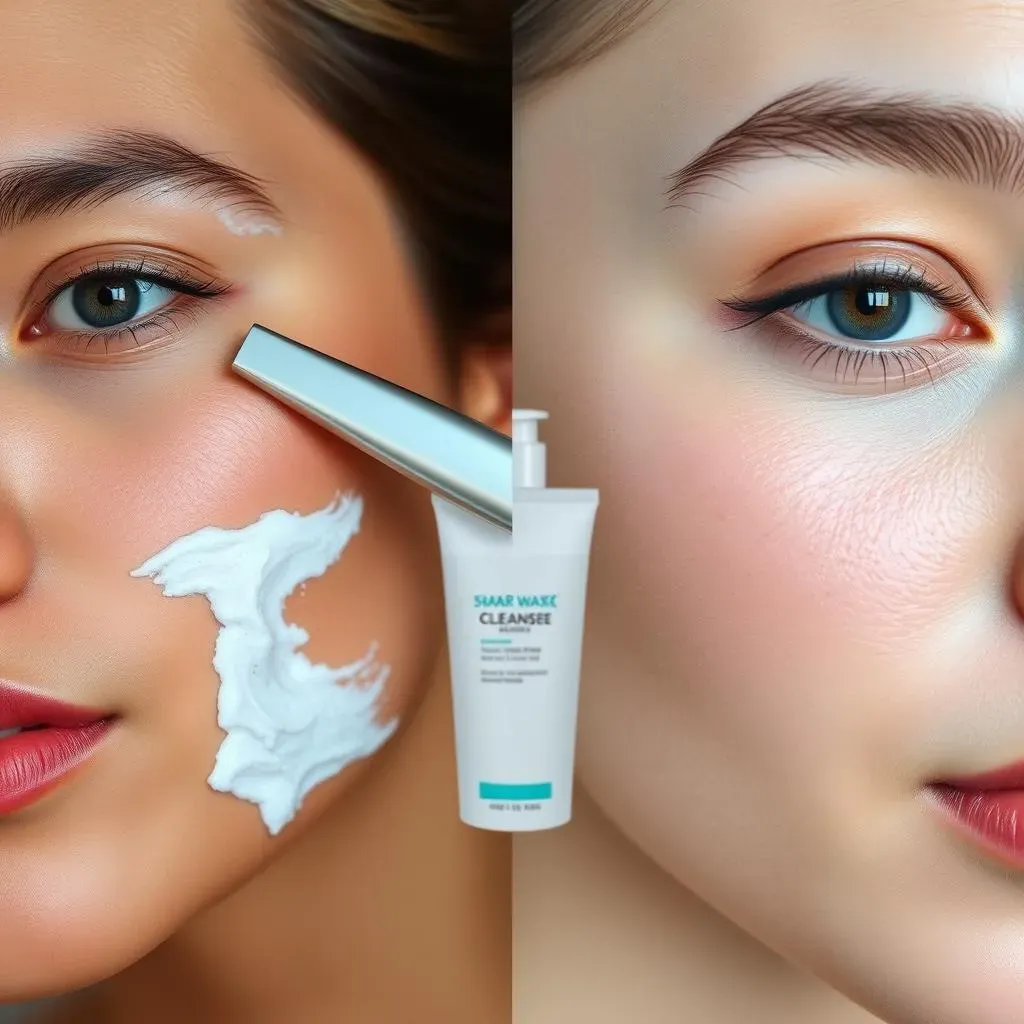
Prevention Methods for Ingrown Hair on the Face
Proper Hair Removal Techniques
Preventing ingrown hairs on the face starts with proper hair removal techniques. One of the most effective ways to avoid ingrown hairs is to shave in the direction of hair growth, not against it. Shaving against the grain can cause the hair to bend back into the skin, leading to inflammation and irritation. Additionally, using a sharp razor and shaving cream can help reduce friction and prevent nicks and cuts.
When waxing, it's essential to follow the hair growth direction as well. Removing the wax in the opposite direction of hair growth can cause the hair to break off below the skin's surface, leading to ingrown hairs. Tweezing should also be done with care, as pulling the hair in the wrong direction can cause it to break and grow back into the skin.
Hair Removal Method | Precautions | Benefits |
|---|---|---|
Shaving | Shave in the direction of hair growth, use sharp razor and shaving cream | Quick, easy, and cost-effective |
Waxing | Remove wax in the direction of hair growth, avoid sensitive areas | Long-lasting results, smooth skin |
Tweezing | Pluck in the direction of hair growth, avoid over-tweezing | Precision, good for small areas |
Skincare Routine and Hygiene
A consistent skincare routine can help prevent ingrown hairs by keeping the skin clean and exfoliated. Washing your face twice a day with a gentle cleanser can remove dirt, oil, and bacteria that may clog pores and contribute to ingrown hairs. Exfoliating once or twice a week with a product containing alpha-hydroxy acids (AHAs) or beta-hydroxy acids (BHAs) can help remove dead skin cells and other debris.
Additionally, avoiding tight clothing and maintaining good hygiene can reduce friction and prevent ingrown hairs. Wearing loose, breathable clothing and avoiding excessive heat or sweat can also help keep the skin healthy and reduce the risk of ingrown hairs.
- Wash face twice a day with gentle cleanser
- Exfoliate once or twice a week with AHA or BHA product
- Avoid tight clothing and excessive heat
- Keep the skin moisturized to prevent dryness and irritation
Alternative Hair Removal Methods
For those who experience persistent ingrown hairs, alternative hair removal methods may be worth considering. Laser hair removal, for example, uses a laser to target and destroy hair follicles, reducing the likelihood of ingrown hairs. Electrolysis is another option, which involves inserting a fine needle into each hair follicle to destroy the root with a small electrical charge.
Depilatory creams can also be an effective way to remove hair without causing ingrown hairs. These creams dissolve the hair at the surface of the skin, reducing the risk of hair growing back into the skin. However, it's essential to follow the instructions carefully and perform a patch test before using these products.
Alternative Method | Benefits | Risks |
|---|---|---|
Laser Hair Removal | Permanent reduction, minimal risk of ingrown hairs | Expensive, requires multiple sessions |
Electrolysis | Permanent results, suitable for most skin types | Time-consuming, may require multiple sessions |
Depilatory Creams | Easy to use, relatively inexpensive | May cause skin irritation, not suitable for coarse hair |
Advanced Solutions for Persistent Ingrown Hair Removal
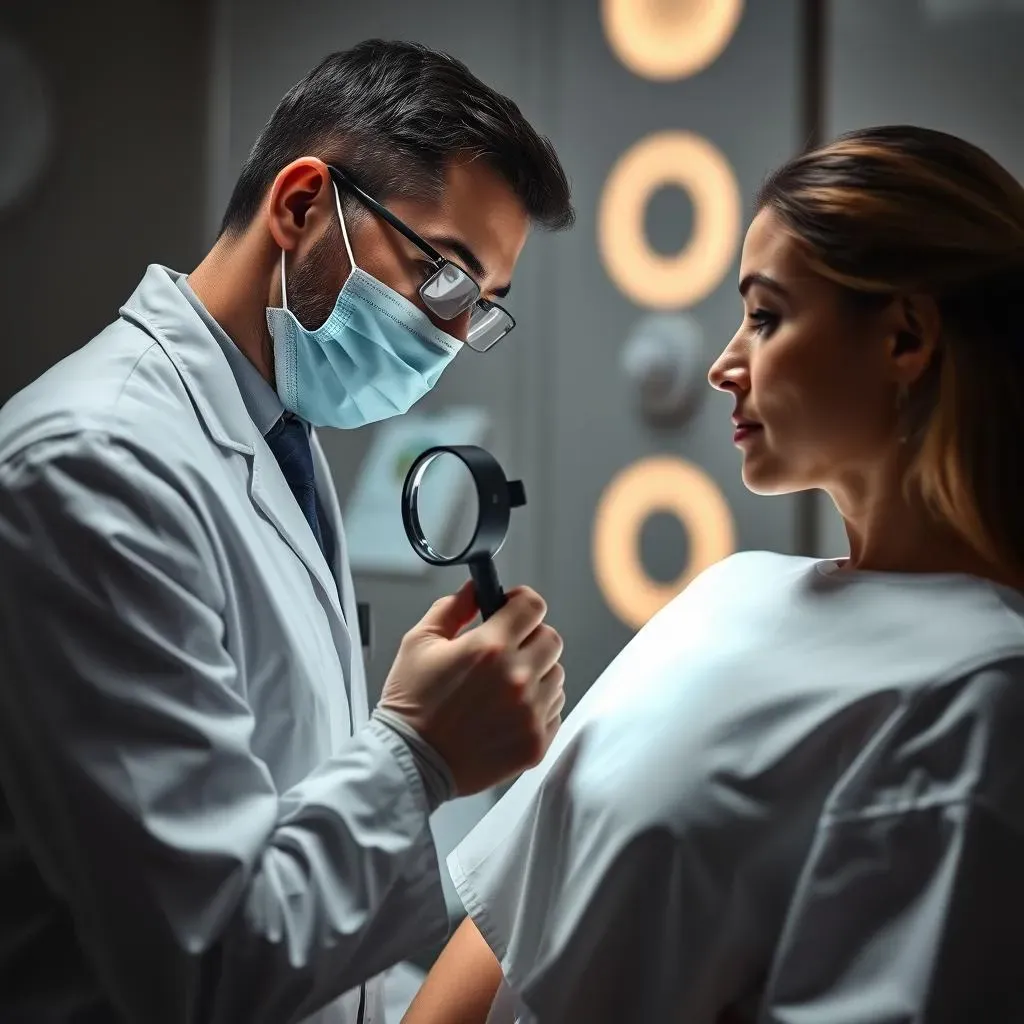
Advanced Solutions for Persistent Ingrown Hair Removal
Laser Hair Removal: A Permanent Solution
Laser hair removal is a popular option for those looking to permanently reduce ingrown hairs. This method uses a laser to target the hair follicle, heating it up and preventing future growth. The process typically requires multiple sessions, spaced 4-6 weeks apart, to achieve optimal results. Laser hair removal is suitable for most skin types, but it's essential to find a qualified practitioner to minimize the risk of complications.
One of the primary benefits of laser hair removal is its effectiveness in reducing ingrown hairs. By destroying the hair follicle, the likelihood of hair growing back into the skin is significantly decreased. Additionally, laser hair removal can be used on most areas of the face, including the eyebrows, chin, and cheeks.
Number of Sessions | Results | Cost |
|---|---|---|
3-6 sessions | Permanent hair reduction, minimized ingrown hairs | $100-$300 per session |
Electrolysis: A Permanent Hair Removal Method
Electrolysis is another permanent hair removal method that involves inserting a fine needle into each hair follicle and applying a small electrical charge to destroy the root. This method is time-consuming, as each hair is treated individually, but it can be very effective for small areas of the face. Electrolysis is suitable for most skin types and can be used to remove stray hairs or shape eyebrows.
While electrolysis requires multiple sessions, the results are permanent, making it a worthwhile investment for those struggling with persistent ingrown hairs. However, it's crucial to find a licensed electrologist to ensure the procedure is done safely and effectively.
- Permanent hair removal
- Minimized risk of ingrown hairs
- Time-consuming, requires multiple sessions
Depilatory Creams and Other Chemical Removal Methods
Depilatory creams, such as Veet or Nair, dissolve the hair at the surface of the skin, making it easy to wipe away. These creams are a good alternative to shaving and waxing, as they reduce the risk of ingrown hairs. However, they may not be as effective for coarse or thick hair, and some users may experience skin irritation.
Other chemical removal methods, such as sugaring or threading, can also be effective in removing hair without causing ingrown hairs. Sugaring involves applying a sugar-based paste to the skin and pulling it off in the opposite direction of hair growth, while threading uses a thread to pull out the hair from the root. These methods may require some practice to master but can be a good alternative to traditional hair removal techniques.
Method | Benefits | Risks |
|---|---|---|
Depilatory Creams | Easy to use, minimal risk of ingrown hairs | Skin irritation, may not be effective for coarse hair |
Sugaring | Long-lasting results, exfoliates the skin | May cause redness, requires practice |
Threading | Precision, good for small areas | May cause redness, requires skill |
Conclusion
Removing ingrown hair from the face requires patience, diligence, and the right approach. By understanding the causes and symptoms, exploring treatment options, and incorporating prevention methods into your daily routine, you can effectively manage ingrown hairs and reduce their occurrence. For severe or persistent cases, advanced solutions like electrolysis or laser hair removal, offered by professionals at hairawaybylaser.com, can provide a more permanent solution. Remember, healthy skin is just a few steps away – start your journey to ingrown hair-free skin today by implementing these tips and saying goodbye to the discomfort and embarrassment of ingrown hairs.
